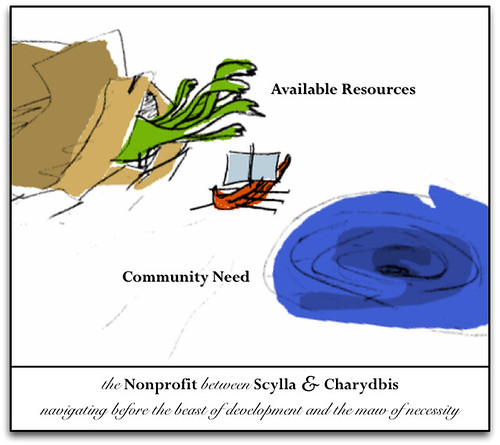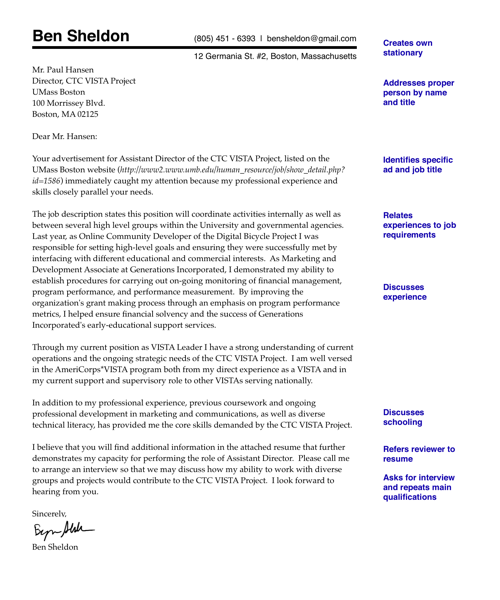The following is from a handout I created for the CTCnet Conference in which I presented on capacity building models for community engagement. You can download the handout with worksheet (PDF), or read the overview below.
The core competency for any organization—private or nonprofit, funder or grantee—is learning to manage change while maintaining high performance on standard functions and simultaneously building capacity to learn and evolve.
—Evaluations of Capacity Building: Lesson from the Field,Alliance for Nonprofit Management
Communities form the context in which nonprofit organizations operate. Driven by community needs and powered by community resources, successful organizations must continually assess how their organization’s mission and programs fit into the evolving landscape of their communities.
Every organization has the ability to adapt and succeed, but may lack the tools and guiding ideas to make sense of the situations they face. Organizations that are continually expanding their capacity to create their future require the information and tools needed to successfully engage their community.
Building an organization that can adapt and thrive requires two main competencies:
-
The organization regularly assesses community needs and resources
-
The organization regularly responds to new/emerging needs and resources
Building these two competencies into an organization with limited abilities and resources requires that the organization seeks innovative methods to create community participation and collaboration.
“…community engagement is the process of working collaboratively with and through groups of people affiliated by geographic proximity, special interest, or similar situations to address issues affecting the well-being of those people. It is a powerful vehicle for bringing about environmental and behavioral changes that will improve the health of the community and its members. It often involves partnerships and coalitions that help mobilize resources and influence systems, change relationships among partners, and serve as catalysts for changing policies, programs, and practices.”
—Stephen B. Fawcett, Work Group for Community Health and Development
Community engagement supports your organization’s mission, programs and capacity by ensuring they remain relevant to community needs and environmental forces. Developing your organizations Community Engagement competency is Capacity Building. This may include the creation of:
-
Assessment of Community Opportunities and Dangers
-
Interpretation of your mission/programs and create messages for specific audiences
-
Development of programs that meet new/emerging needs
-
Creation of partnerships that generate or share resources and information
-
Mobilization of people and resources (internal, external and potential) to make achievements
-
Processes to invite and accept community feedback
-
Opportunities to invite community members into your organization and leadership
In the context of community engagement, the creation and sharing of resources goes beyond just financial resources. It may include: human resources (staff and volunteer time), physical resources (office space, materials and in-kind donations), and social-resources (word-of-mouth, recognition, legitimacy, “buzz”). Additionally, community engagement strategies may have benefits beyond the scope of their initial purposes.
** - Do we know what the community needs?
**
-
Are we asking the community what it needs?
-
Does everyone in the community know what it is we do for them?
-
Are we inviting the community to help us help them?
-
Are we using our organization to its fullest potential?
In order to be successful, Community Engagement should be approached as a practical, time- and resource-bound process; the goal is not to produce a complex or exhaustive plan that is impossible to implement. Instead, community engagement should be viewed as a series of ongoing and/or incremental strategies and achievable initiatives that seek to identify and engage specific groups within the communities your organization operates within. This process involves:
-
Developing Community Engagement Strategies
-
Determine the Goals of the Plan
-
Plan Out Who to Engage
-
Develop Engagement Strategies for Those Individuals You Already Know
-
Develop Engagement Strategies of Those Individuals You Do NOT Already Know
-
Prioritize those Activities
-
Create an Implementation Plan (strategy)
-
Monitor Your Progress (measurement)
-
Maintain those Relationships (sustainability)
A Basic Logic Model

Problem Statements and Goals
When seeking to design a Community Engagement initiative, assessing needs and converting them into a Problem Statement and Goals to address it can be difficult. Two questions to ask are:
What are the core-competencies/abilities/resources/skills of our organization that are not being fully-utilized within the community?
…and…
What strategies or initiatives would significantly impact our ability to effectively offer/expand programs or maintain the capacity of our organization? (size, scope, resources, volunteers, etc.)
These sections should seek to define the Who, What, and Where of your proposal.
Capacity Building Logic Models vs. Program Logic Models
Both Capacity Building Projects and Programs share the same Logic Model structure. The primary difference between the two is that the goals of Programs relate to specific changes that will take place within clients or individuals served by the program. In comparison, Capacity Building projects have goals that alter the programs, structure or systems of the organization itself.
Rationales, Assumptions and External Factors
Rationales are the Why of your proposal. What questions might someone raise as to the efficacy of the endeavor and how would you respond to them? What knowledge or experience do you have that would aid in explaining why such a project would succeed?
Assumptions are existing resources, skills or competencies that are already in place and your project will rely upon (but may not directly affect). Thinking critically about Assumptions will help you interpret your project for people who may not be knowledgeable about your organization or community.
External Factors describe issues or events that are outside the scope of your project but may help or hinder it. These may take place within the organization (e.g. staff or leadership changes) or outside of the organization (e.g. economic or social crises).
Resources and Activities
Below are some activities that could be incorporated into existing programs or communication strategies. It’s important to note which of these are 1-way and which are 2-way, which might be more or less effective in your community (or for certain groups within your community) and how the feedback generated will be incorporated into your organizations services and strategies.
-
Community interviews/Face-to-face meetings
-
Informal meetings
-
Briefings
-
Workshops
-
Public meetings and hearings
-
Panel discussion, brain-storming
-
Shared Initiatives and Partnerships
-
Public notice
-
Fact sheets
-
Telephone contacts
-
Telephone Hotline
-
Door-to-door canvassing
-
Bulletin Boards
-
Posters Facility tours
-
Field Trips
-
Special events
-
Radio
-
Television
-
Films/Screenings
-
Exhibits
-
Internet Sites or Online Communities
-
Newsletter, Newspaper insert
-
News conference
-
Press-kits
-
Advisory Boards
-
Volunteer Development
-
Program Development
Measuring Outputs and Outcomes
Outputs are tangible products that are produced as a part of your project. They may include documentation, lists of contact information, curriculum or communications pieces. Outputs are the easiest to measure (they have been produced or have not) and also may produce the longest-lasting benefits because they will continue to exist beyond the completion of activities and may contribute to or influence further projects or strategies.
Outcomes are the results or impact of the activities your project performs. These outcomes should directly relate to producing the goals you have outlined for the project. Outcomes should be phrased in terms of change and be measureable. Outcomes can be split into short, medium and long-term parts.
-
Short Term Outcomes are the results you expect see immediately:_ numbers of volunteers, hours of programming, dollars raised, etc. (often numbers of things) _
-
Intermediate Outcomes are the results you want to see over more time: _increased name-recognition, program satisfaction, communications through a particular medium, etc. (often measured as percentages, e.g. percentage of people strongly satisfied, or percentage of clients referred through a website) _
-
Long-term Outcomes are the results you hope to see eventually: _greater access to resources, greater stability, feelings of support or recognition, etc. (often general feelings or perceptions one might acquire from personal stories or interviews) _
More Resources
Evaluations of Capacity Building: Lessons from the Field (Book), Alliance for Nonprofit Management
http://www.allianceonline.org/publications/evaluation_of_capacity.page
Online Engagement Strategies and Skills, NTEN “We Are Media Project”,
http://www.wearemedia.org/Strategy+Module+5
Introduction to Community Engagement, Help 4 Nonprofits,
http://www.help4nonprofits.com/NP_Mktg_Marketing-vs-CommunityEngagement_Art.htm
Seven Areas of Nonprofit Excellence, New York Times Company Nonprofit Excellence Awards,
http://nytawards.fcny.org/npea/excellence/
Measuring Innovation, Skoll Foundation & Foundation Strategy Group,
http://www.skollfoundation.org/media/skoll_publications.asp
Spitfire Strategies Communications Tools: Smart Chart, Activation Point
http://www.spitfirestrategies.com/tools
Logic Model Development Guide, W.K. Kellogg Foundation
www.wkkf.org/Pubs/Tools/Evaluation/Pub3669.pdf




